Key takeaways
- Aquafaba, the liquid from canned chickpeas, can effectively replace eggs in baking, offering versatility and reducing waste.
- Whipping chilled aquafaba can yield airy, fluffy textures, important for achieving light baked goods.
- Precision in measuring aquafaba is crucial for recipe success, typically three tablespoons replace one egg for optimal results.
- The process of experimenting with aquafaba can enhance baking skills and lead to delightful, moist vegan treats.
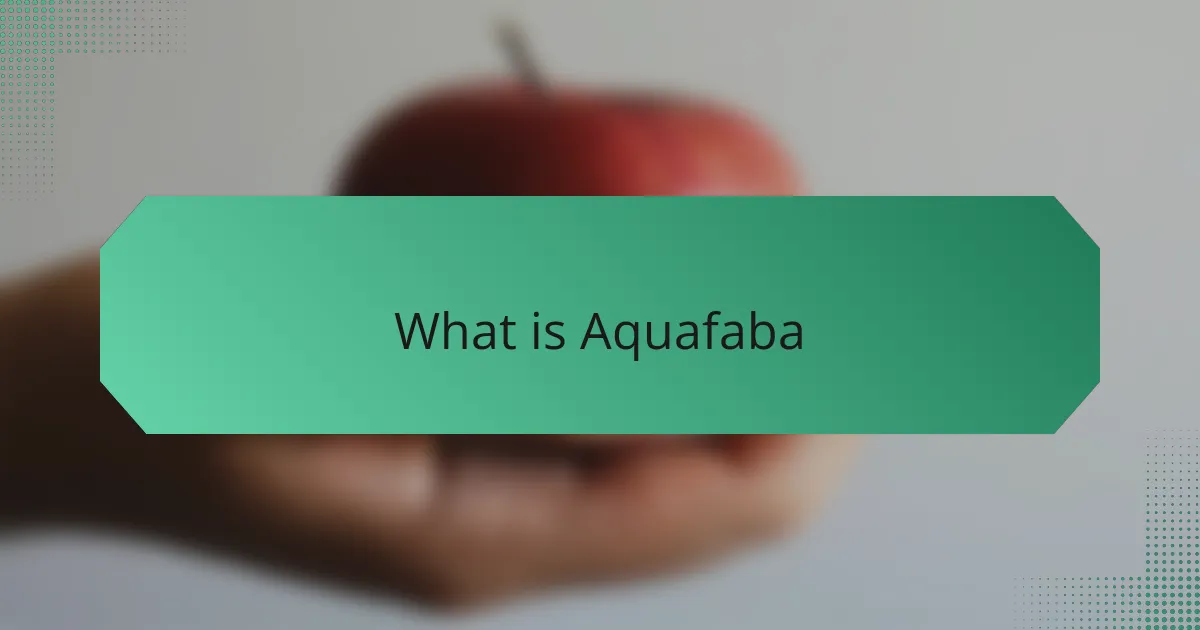
What is Aquafaba
Aquafaba is simply the liquid you find in a can of chickpeas or other legumes. When I first heard about it, I was skeptical—how could such a humble byproduct whip up like egg whites? But this thin, slightly starchy water surprised me by turning into fluffy peaks that mimic eggs perfectly.
Have you ever noticed how wasteful cooking sometimes feels? Discovering aquafaba felt like uncovering a little kitchen secret that not only reduces waste but opens new doors for vegan baking. Its unique ability to replace eggs without compromising texture or taste blew me away and made me rethink what ingredients really matter.
To me, aquafaba represents creativity and sustainability coming together in the simplest form. It’s amazing how something so overlooked can transform cupcakes into light, airy treats that anyone can enjoy—whether they eat vegan or not. How often does a single ingredient do so much?
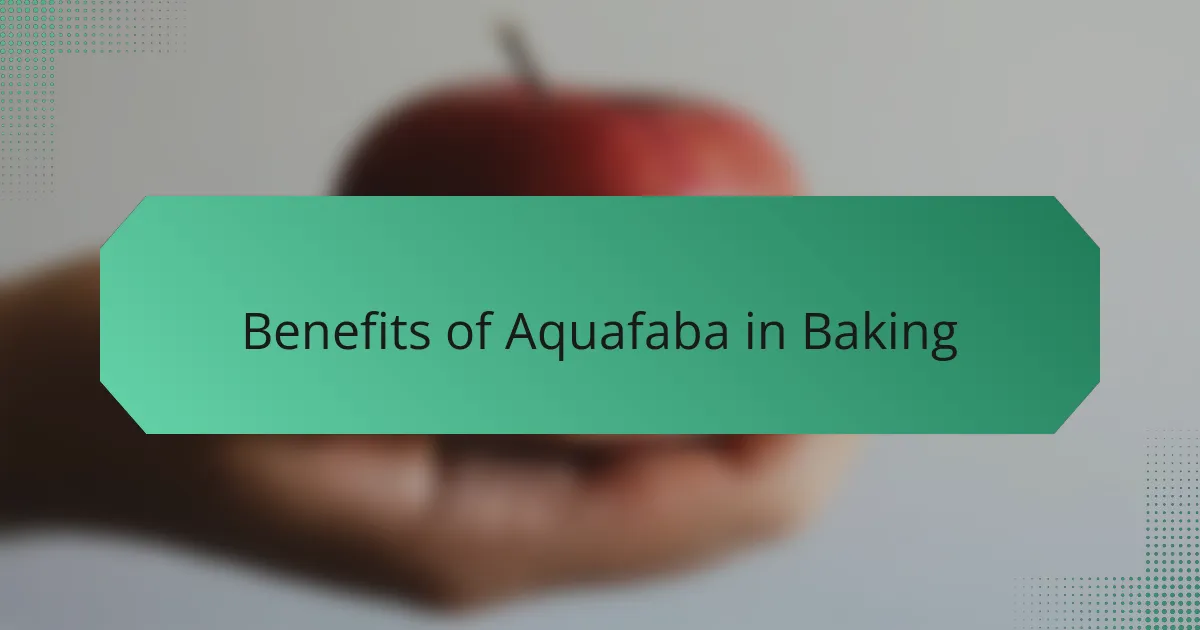
Benefits of Aquafaba in Baking
One of the biggest benefits I’ve found with aquafaba in baking is its incredible versatility. It acts like an egg binder, a leavening agent, and even adds moisture—all in one simple ingredient. Have you ever struggled to find the right vegan substitute that doesn’t change the flavor or texture? Aquafaba solved that puzzle for me, making cupcakes rise beautifully without any weird aftertaste.
What really delights me is how aquafaba brings such lightness to baked goods. I remember my first batch of aquafaba cupcakes—the texture was unexpectedly fluffy, almost like magic. Using this liquid felt like a little victory against dense, heavy vegan desserts that often leave you wanting more. Isn’t it refreshing when a simple swap gives you that perfect crumb and softness every time?
Plus, there’s something deeply satisfying about using aquafaba from chickpeas I already have in my pantry. It turns what might be wasted into a star ingredient, which makes baking feel more thoughtful and eco-friendly. I ask myself, why not embrace this sustainable hack that saves resources while elevating my baking? To me, that’s a win-win I’m eager to keep exploring.
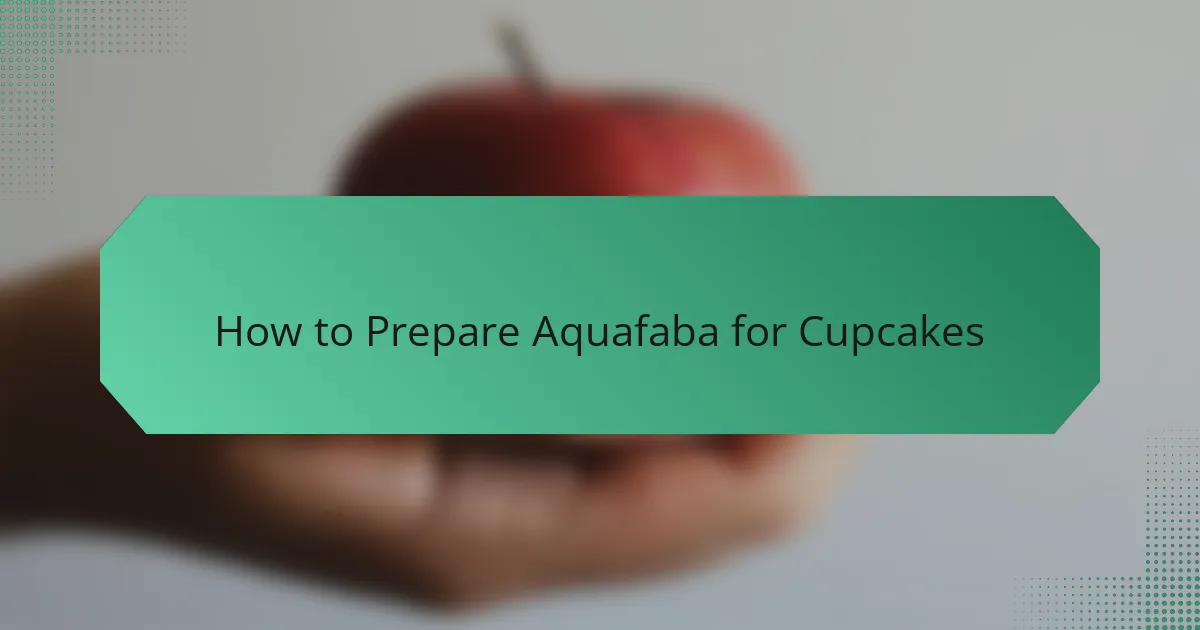
How to Prepare Aquafaba for Cupcakes
Preparing aquafaba for cupcakes is surprisingly straightforward, but there’s a little finesse that makes all the difference. I usually drain the liquid from a can of chickpeas and strain it through a fine mesh to remove any solids. This simple step ensures my aquafaba is silky smooth, which helps it whip up more easily.
Have you ever wondered how to get those perfect stiff peaks? From my experience, chilling the aquafaba for an hour before whipping really boosts the volume. Using a hand mixer, I beat it on high speed for about 5 to 10 minutes until it holds peaks just like egg whites—light, glossy, and full of promise.
One tip I’ve learned is to measure about three tablespoons of aquafaba to replace one egg in cupcake recipes. It feels a bit like alchemy, watching this humble liquid transform batter into something so airy and tender. Trust me, once you get the hang of this simple prep, your cupcakes will never be the same.
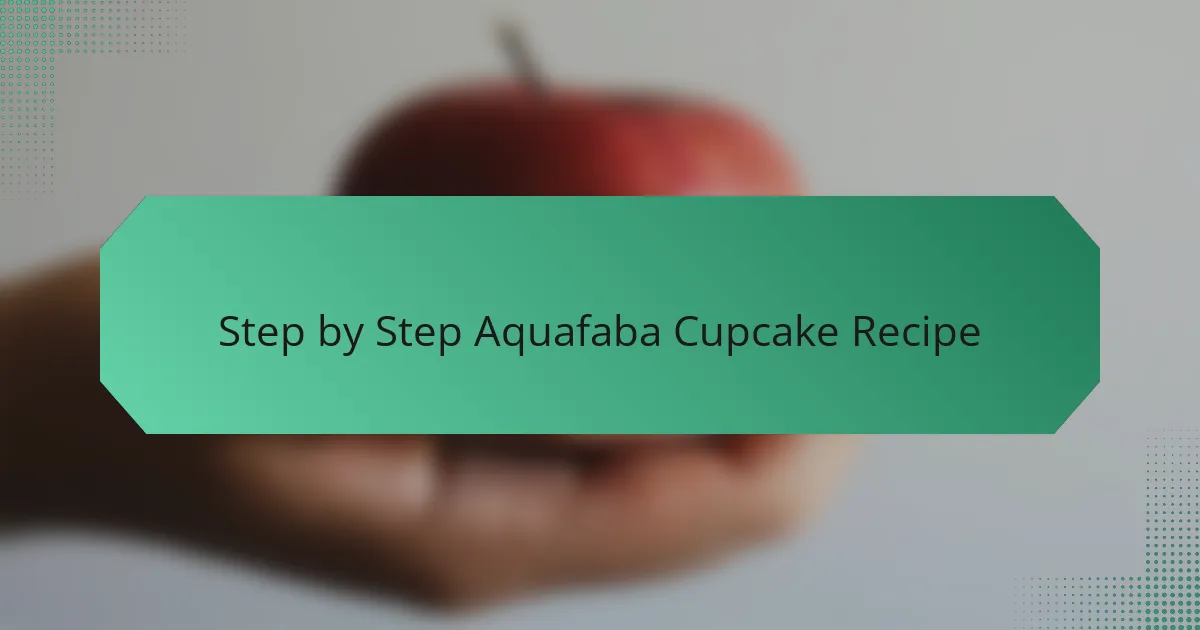
Step by Step Aquafaba Cupcake Recipe
Getting started with my step-by-step aquafaba cupcake recipe, I always begin by whipping the chilled aquafaba. It’s almost mesmerizing watching it thicken and transform into those glossy, fluffy peaks—kind of like magic in your mixing bowl. Have you tried whipping aquafaba before? If so, you know that perfect stiff peak stage feels like the green light to move forward confidently.
Next, I gently fold the whipped aquafaba into the cupcake batter. This part requires a delicate touch because you want to keep all that air trapped inside. From experience, rushing this step can deflate the batter, so patience really pays off here—watching the mixture turn light and airy always feels rewarding.
Finally, I pour the batter into cupcake liners and pop them into the oven. The moment my kitchen fills with that warm, inviting aroma, I get this little burst of joy knowing aquafaba helped create something so tender and fluffy without a single egg. Have you noticed how these cupcakes rise just right every time? For me, that consistency makes aquafaba an absolute kitchen hero.

Common Challenges Using Aquafaba
Sometimes, aquafaba can be a bit temperamental, and not every batch whips up perfectly on the first try. I remember trying to get stiff peaks once and ended up with a watery mess instead—frustrating, right? It taught me that factors like the brand of chickpeas or even the liquid’s thickness can really influence the outcome.
Another challenge I’ve faced is measuring the right amount of aquafaba. Too little, and your cupcakes turn out dense; too much, and the batter becomes overly wet. Have you ever had a recipe flub because of tiny ingredient tweaks? Getting this balance took me a few experiments but made all the difference in texture.
Lastly, I’ve noticed aquafaba doesn’t behave well with every oven or bake time. Sometimes, cupcakes rise beautifully but then collapse or get a bit rubbery. From my experience, keeping an eye on baking times and temperatures is crucial—just like with eggs. It’s a small adjustment, but it saves a lot of disappointment.
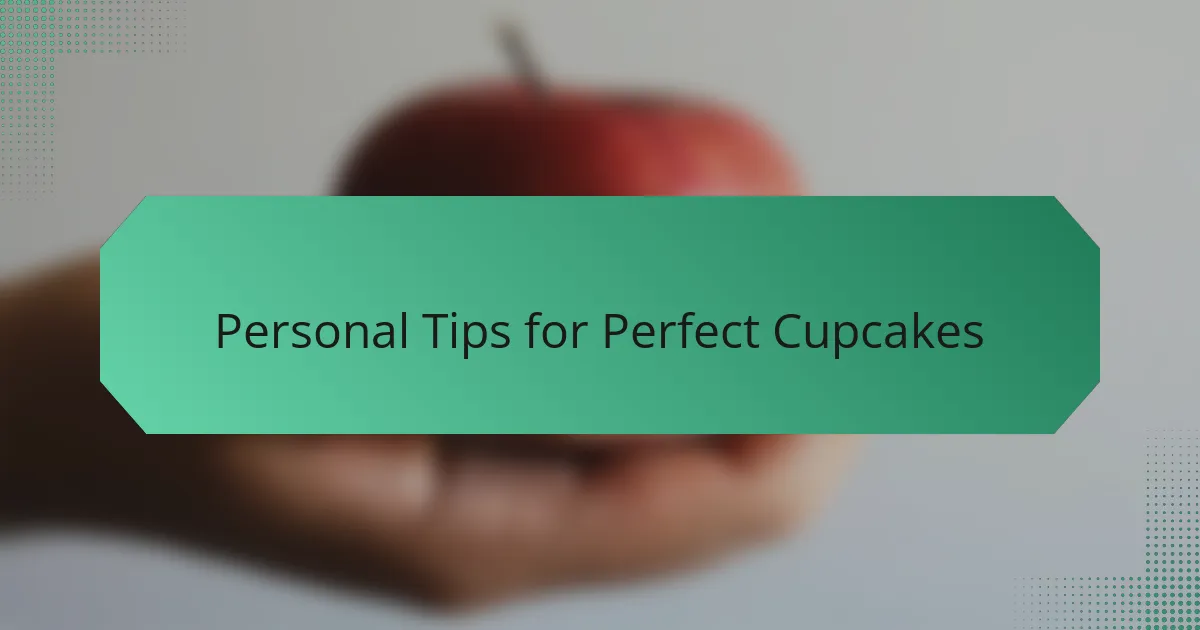
Personal Tips for Perfect Cupcakes
One tip I swear by is to always use fresh aquafaba that’s been properly chilled. I’ve found that cold aquafaba whips up faster and holds those fluffy peaks much better. Have you ever tried beating room temperature aquafaba only to end up waiting forever? Trust me, the chill makes a noticeable difference in texture and helps avoid frustration.
Patience is key when folding whipped aquafaba into the batter. Early on, I used to mix too aggressively, which flattened all the air I’d worked so hard to trap. Now, I fold gently in slow, deliberate strokes, almost like coaxing the mixture to stay light. It’s a small change, but it keeps my cupcakes airy and tender every time—I’ve learned that rushing this step is the quickest way to lose that perfect fluff.
Lastly, measuring is more than just numbers when it comes to aquafaba. I started by eyeballing it and sometimes ended up with soggy or dense cupcakes. Once I committed to using about three tablespoons per egg replacement, my results became consistently reliable. Don’t underestimate the power of precision here; it’s a simple habit that transforms your baking process and, frankly, saves a lot of guesswork.

My Experience with Aquafaba Cupcakes
Whenever I bake aquafaba cupcakes, I still get this little thrill watching the batter rise in the oven—there’s something magical about turning humble chickpea liquid into fluffy treats. One time, I nervously presented these cupcakes to friends who weren’t vegan, and watching them enjoy each bite without guessing the secret ingredient felt like a sweet victory. Have you ever had that moment when something simple impresses beyond expectations? That’s exactly how aquafaba cupcakes make me feel.
At first, I admit I was frustrated because not every batch whipped up perfectly, and I questioned if this ingredient was just a fad. But after tweaking my technique—especially chilling the aquafaba and folding gently—I saw a marked improvement. It taught me patience and attention matter just as much as the recipe itself. Isn’t it funny how baking often reflects life this way?
What I appreciate most is the way aquafaba cupcakes always come out light yet moist, striking that elusive balance many vegan recipes miss. Each bite reminds me why experimenting with less obvious ingredients can lead to such rewarding results. Have you tried baking with aquafaba yet? If not, I’d encourage you to give it a real go—you might discover your new favorite kitchen hack, just like I did.